|
|
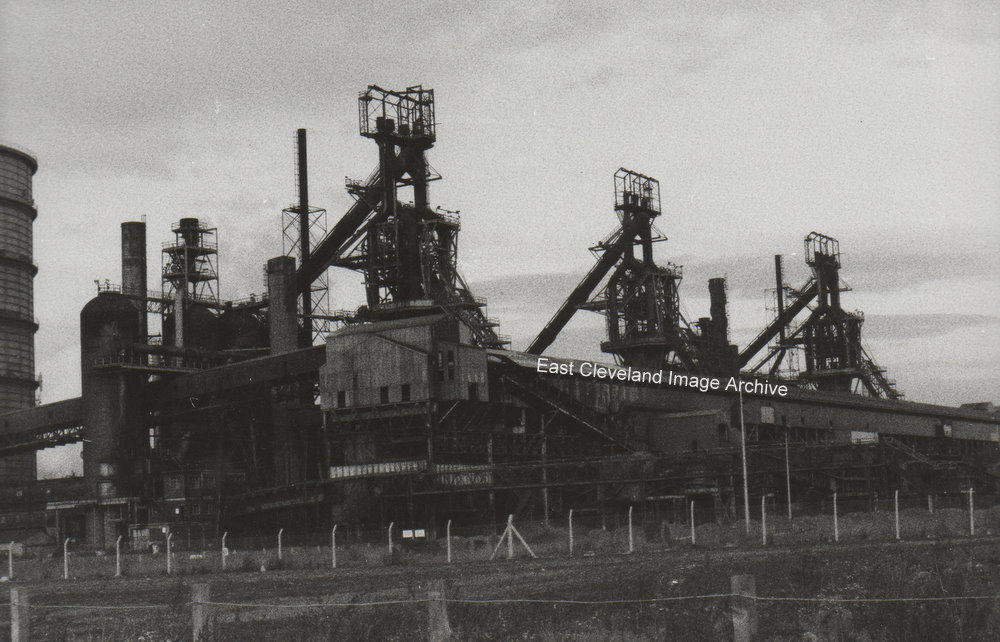
This must be getting rather monotonous, but archives are sometimes! This photograph is about 30 degrees right of the previous post and shows that there are three blast furnaces in this set – definitely Clay Lane – taken off wind and closed down after the big one at Redcar was blown in. All three had differing hearth diameters and produced per day varied. These three all ran under high top pressure – if you look closely at one and five you will count the three bleeders at the top – but if you follow the downcomer up you will notice a fourth smaller one. This arrangement allowed a higher gas flow rate without taking too much dust out. Neil Judson advised: “No 2 furnace did not have high top pressure.” Whilst Tony Bell tells us: “Your original facts were incorrect regarding hearth diameters, they were all different. Also production was 2 to 2.4 thousand tonnes a day with no.1 furnace and no. 3 furnace had high top pressure but was rarely used.”
Image courtesy of the Pem Holliday Collection, information courtesy of Robert Proctor, also thanks to Neil Judson and Tony Bell for the updates..
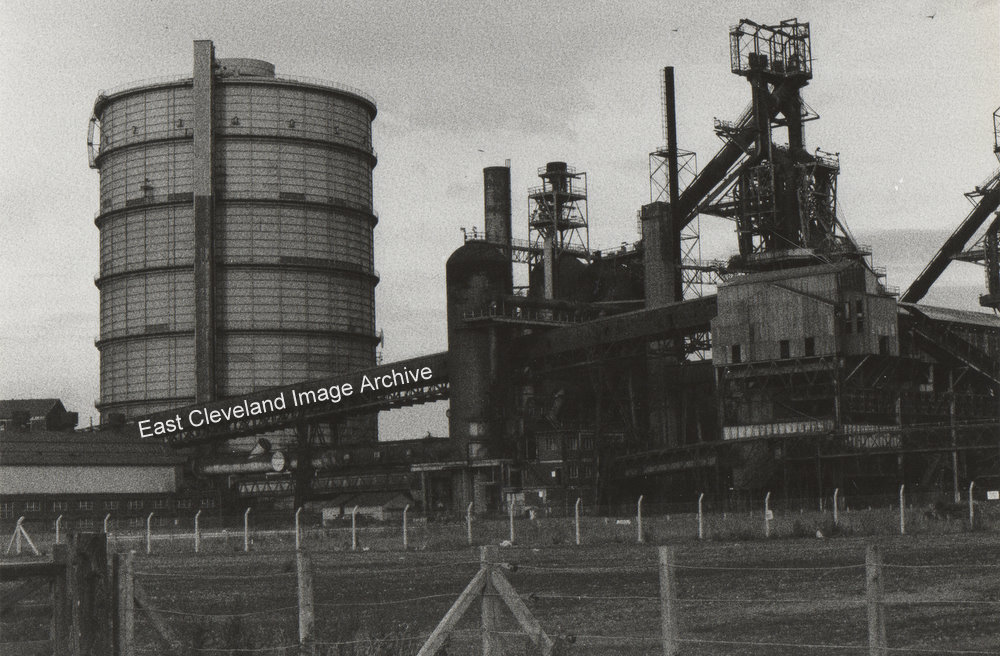
That big silo-type unit looks so familiar – it should do – it stood behind the left-most furnace of the three at Clay Lane steel works.
Image courtesy of the Pem Holliday Collection and thanks to Eric Johnson for confirmation of the location.
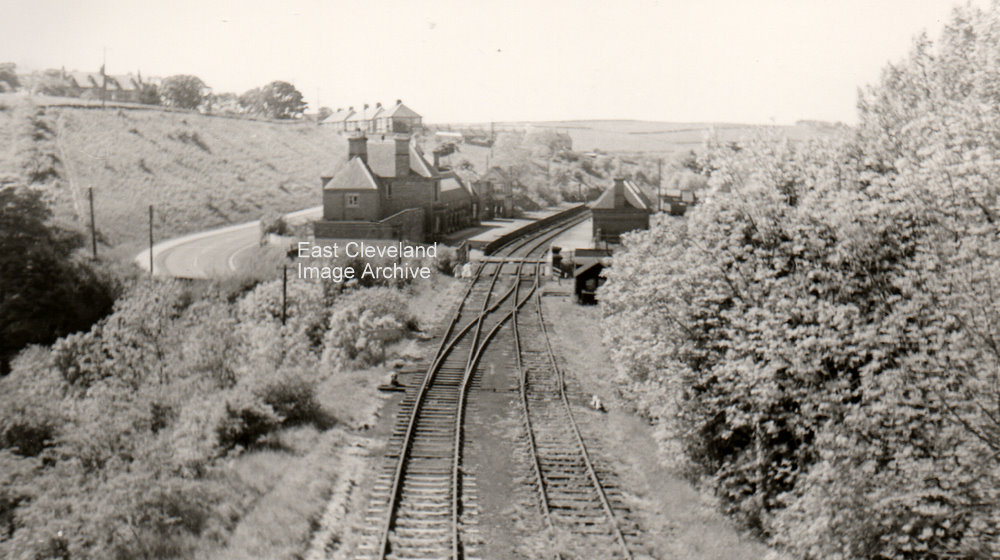
A view of Loftus Station, looking towards Liverton Mines from the Rosecroft Lane bridge, visible in the previous post. Today the station is a private house; with only a single rail track running past the buildings.
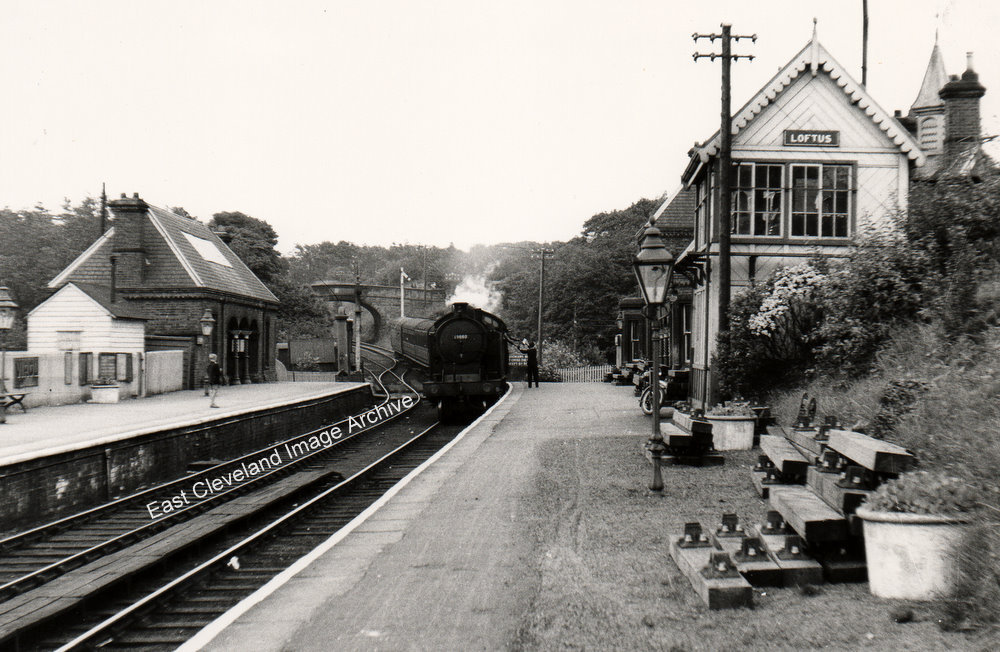
A neat and tidy Loftus Station with a Saltburn-bound train arriving, headed by the ubiquitous tank engine. The Stationmaster is exchanging Tokens with the engine-driver, as Loftus was the end of one control block and the beginning of another in the Token-controlled single track railway system (basically the line was split into sections, each controlled by a token. A train arriving at Loftus would surrender its Token (freeing up the section of track that it was leaving) and would receive a Token allowing it to proceed into the next section of track. If there was still a train in the next section then the Stationmaster couldn’t give the engine driver a Token, so the train would be held at Loftus until the incoming train arrived and surrendered its Token). This system is still in use on the Middlesbrough to Whitby branch, although, sadly there are no more Stationmasters and no more signal box staff (a control section always had a signal box), so there is a box on the control stations with a Victorian Lock Frame (to receive the Token) and another Victorian Lock Frame to dispense the next Token and a computer link to advise the Middlesbrough Control Centre of a ”train in section”. All very sad, but I’ve no doubt all very efficient! Loftus still has trains passing through, but none stop. The line now serves the Cleveland Potash Mine and sadly passengers are no longer a feature of the line after it departs Saltburn. Although special ‘rail tours’ have on occasions used the line.
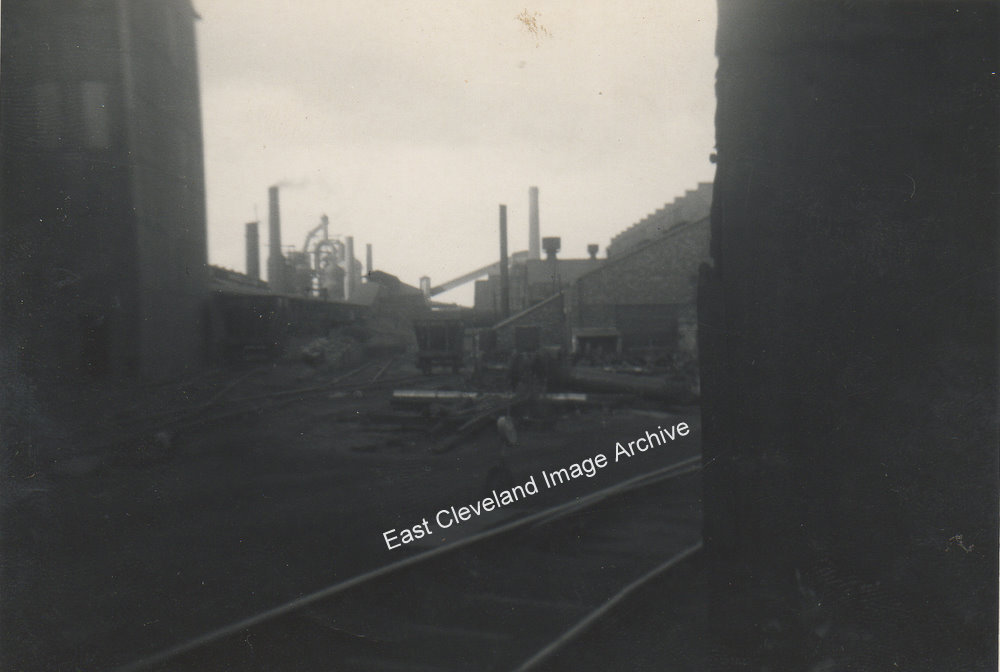
A gloomy shot of a distant blast furnace and the single one at Skinningrove Iron and Steel Works. The building on the right in the middle distance with the ”saw-tooth” roof would be the fitting shop, behind that is the Blacksmith’s Shop with the big extractor on the end chimney. Behind that is visible the Sinter Plant and the blast furnace of course is Number 5. Mike Robinson tells us: ”I am sure that the dark building in the foreground to the right of the railway lines is the corner of the timber store on the end of the joiners shop. We often had derailments outside.” Eric Trembath further assists with: ” Yes; that was the joiner’s timber store, the riggers department took it over when the joiners shut and we used it for storing wire slings and crane ropes until I retired in 2008. This building was always a sore point with the works manager but we managed to keep hold of it.”
Image courtesy of Eric Johnson, thanks to Mike Robinson and Eric Trembath for these updates.
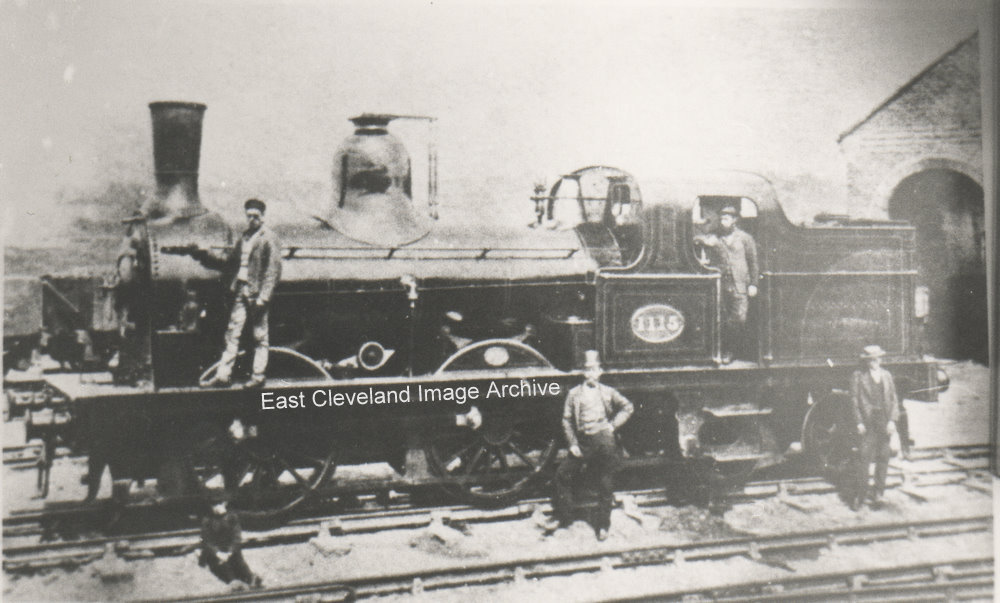
Another proud locomotive crew (and some extras!) stand with their gleaming charge! The location is believed to be outside a Goods Shed between 1875 and 1883. Geoffrey Allen advises us: ”The locomotive is an 0-4-4WT (Well tank) from the Edward Fletcher designed BTP (Bogie Tank Passenger) class and was new from Darlington Works in June 1877. The location is Loftus and one of this class was stationed at Carlin How shed for working the local passenger service. With the introduction of the O Class 0-4-4T’s between 1894 and 1901 many of the BTP’s were deemed surplus to requirements and as a lot of the loco parts could be re-used, 60 were rebuilt at York and Darlington works as NER 290 Class (LNER J77)0-6-0T’s. This loco number 1115 was rebuilt at York in December 1901 and was not withdrawn (as 68409) until the 6th of November 1959 from Hull Dairycoates shed when it was 82 years old!
Image courtesy of the Pem Holliday Collection; with thanks Simon Chapman and Geoffrey Allen for the updates.
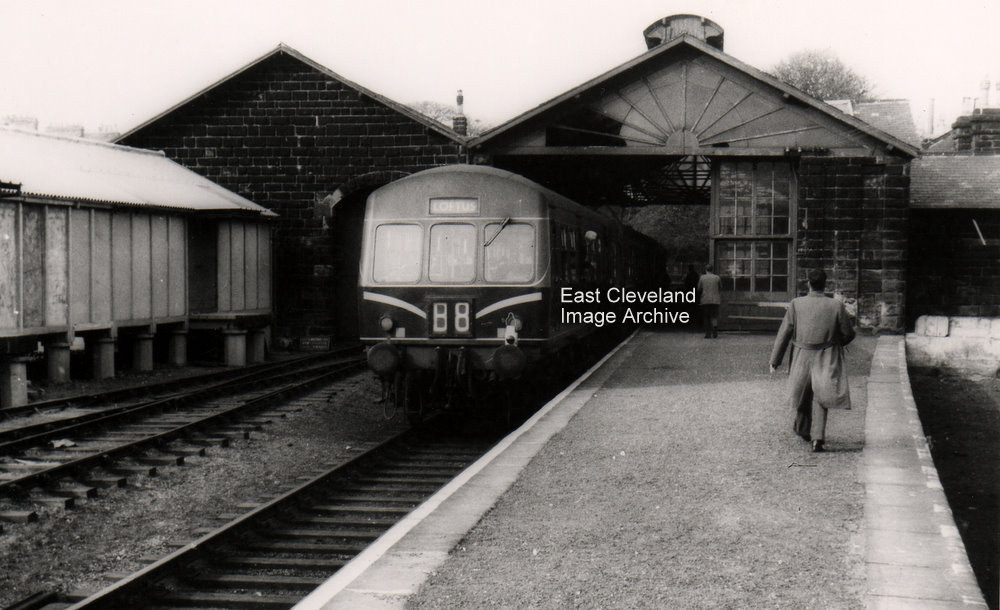
The ubiquitous Diesel Multiple Unit, workhorse of the post-steam era, in this case a Metropolitan-Cammell set, waits at Guisborough station, the station closed in February 1964. Bruce Walton tells us: “I was on the last service train from Guisborough, I have some photos somewhere. A Metro Camell DMU is preserved on the NYMR and I believe on at least one other heritage line.” Russ Pigott advises: “There are several preserved around the country, I bought one a few years ago on behalf of the North Norfolk railway in Sheringham.” Also an update from Peter Cook: “The ‘Now & Then’ magazine has a two page article “The last Goodbye”; in issue No. 59 pages 22 & 23 with photographs; about the final train leaving Guisborough station.”
Image courtesy of the Pem Holliday Collection; also many thanks to Bruce Walton, Russ Pigott and Peter Cook for the updates.
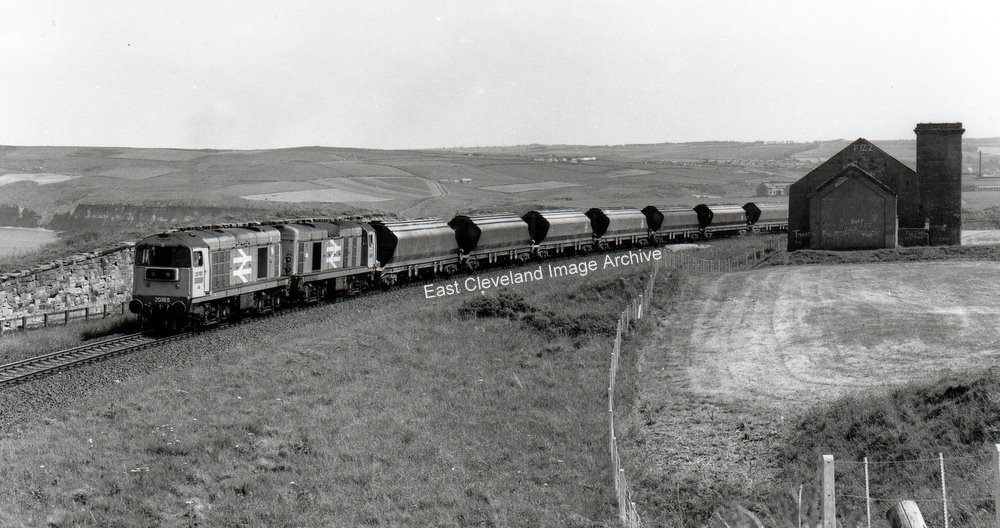
This looks a very modern photograph, about mid-1980’s we’re informed. The locomotives are BR Class 20s, 20165 (from 19878 till 1980 named ”Henry Pease” – how ironic!) and possibly 20118 (latterly named ”Saltburn-by-the-Sea”) – they typically operated ”nose-to-tail” as in this image. With these big arrows they could have been blue with yellow ends, or, even later, grey with yellow ends. On the right of this image is the Guibal fan house at the base of Warsett Hill, Brotton; the only surviving remnant of the Huntcliffe Ironstone Mine.
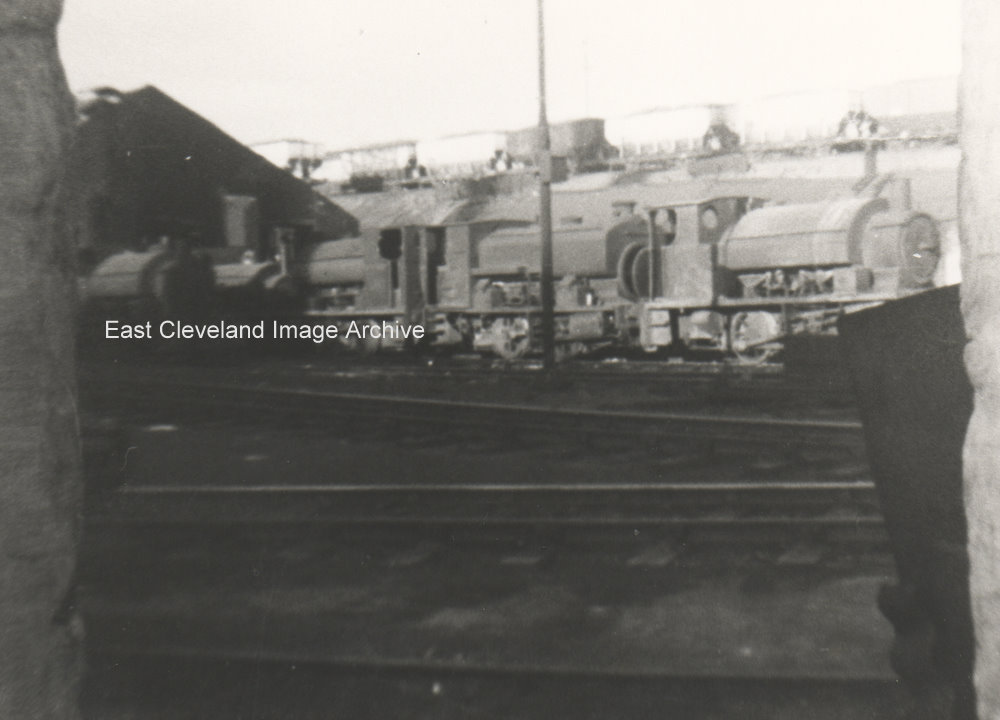
This is a photograph of the old engine sheds at Skinningrove (please correct us if we’re wrong!). The second small ”saddle-tank” loco from the left is the famous Minnie, so loved by all at ”the ’Grove”.
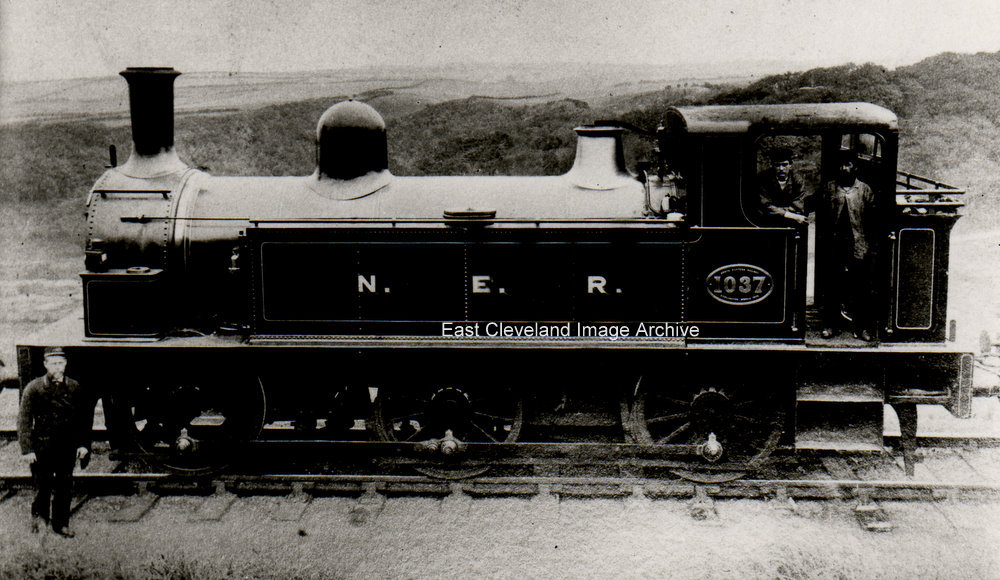
The proud loco men pose for their photographs with their brand new locomotive. The NER insignia being for the North Eastern Railway which became one of the component companies of the London and North Eastern Railway. This is a late Victorian image – I wonder if this is one of the locomotives that used to operate on the Skinningrove ”Z”?
Geoffrey Allen tells us: ”The loco is a class 1037 0-6-0T built at Darlington Works in 1876 one of a class of four specially built in 1876 for the Skinningrove Zig Zag. As pictured it is not new, but as rebuilt in the early 1890′s. The last of the class to work on the Zig Zag was No.1294 withdrawn from Carlin How shed in 1910. This class replaced the 1866 built Class 1196 0-6-0ST’s on the Zig Zag which at 6 tons heavier caused track damage. These were subsequently rebuilt from 1876 as 0-6-0 Tender engines and as rebuilt lasted until 1910.”
Many thanks to Geoffrey Allen for that update.
|
|










Recent Comments